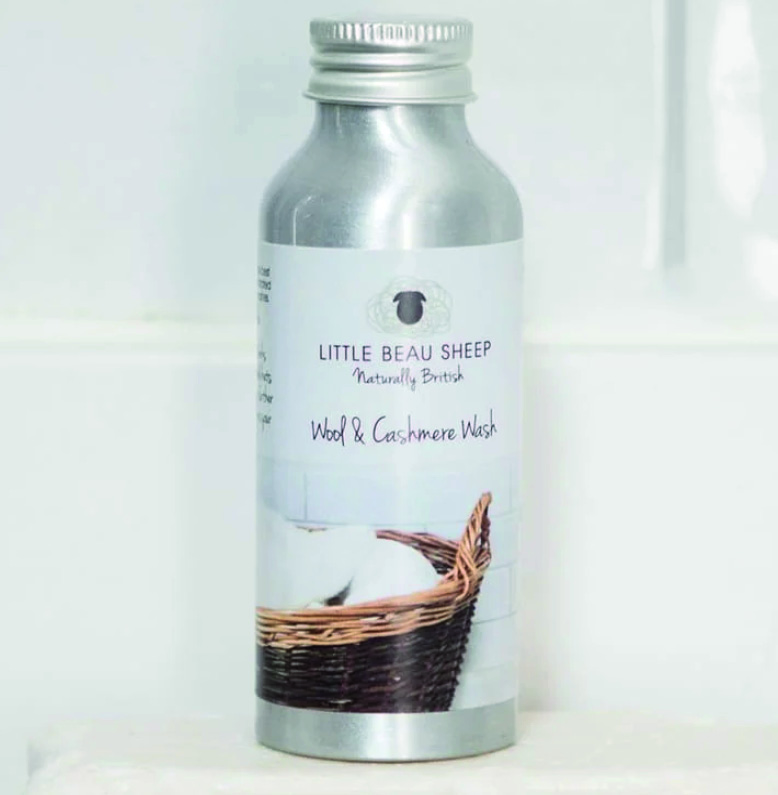What Is Cashmere?
Known the world over for feeling light, warm, and incredibly soft, cashmere is one of the most luxurious yarns money can buy.
Highly sought-after since ancient times, the name is now synonymous with opulence, and whether it’s in a jumper or cardigan, a hat or gloves, it’s always an absolute joy to wear!
Cashmere is made from the wool of a particular species of goat native to northern Asia, traditionally grazed on particular types of vegetation to ensure the highest quality of wool. The nature of its super-fine threads also create more air pockets which circulate heat, keeping you warm when you’re cool, and cool when you’re hot.
If it’s cared for properly, a good cashmere garment will age like fine wine, or a shrewd investment that keeps on giving. Read on to find out more about this distinctly lavish yarn…
Where Does Cashmere Come From?
Cashmere takes its name from the Kashmir region of the Indian subcontinent, where the yarn has been produced for more than 800 years. This is where Cashmere goats originate, but today you’ll find them farmed all over the world.
Contrary to popular belief, Cashmere goats are not a specific breed, and any breed of goat that grows cashmere wool can be classified as a Cashmere goat.
A Cashmere goat’s fleece is made up of two different types of hair: the longer, coarser “guard hair” that makes up the goat’s outer fleece, and is visible all year round, and the much softer “underdown” hair, which grows out as the weather gets colder and then moults in the spring.
This softer undercoat is either sheared or combed from goats every year as their fleece naturally starts to moult, and ultimately goes on to make your favourite cashmere garments!
How to Wash Cashmere
Though the price of this luxurious yarn has gone down in recent years, cashmere still isn’t exactly cheap. Naturally, you’ll want to care for your cashmere as best as possible, and make sure you’re able to get the most out of your investment.
Luckily, almost all of our all-natural garments are machine washable, provided you follow certain precautions you can find in our care guide. If you have any hand-wash only cashmere, or you just want to be extra careful, follow our tips for the best results and minimal risk of damage.
- Wash your cashmere in tepid water to avoid shrinkage (well under 30 degrees) with a splash of cashmere-friendly detergent like our own tea tree oil infused wool wash.
Where Does Cashmere Come From?
Cashmere takes its name from the Kashmir region of the Indian subcontinent, where the yarn has been produced for more than 800 years. This is where Cashmere goats originate, but today you’ll find them farmed all over the world. Contrary to popular belief, Cashmere goats are not a specific breed, and any breed of goat that grows cashmere wool can be classified as a Cashmere goat.
A Cashmere goat’s fleece is made up of two different types of hair: the longer, coarser “guard hair” that makes up the goat’s outer fleece, and is visible all year round, and the much softer “underdown” hair, which grows out as the weather gets colder and then moults in the spring. This softer undercoat is either sheared or combed from goats every year as their fleece naturally starts to moult, and ultimately goes on to make your favourite cashmere garments!
How to Wash Cashmere
Though the price of this luxurious yarn has gone down in recent years, cashmere still isn’t exactly cheap. Naturally, you’ll want to care for your cashmere as best as possible, and make sure you’re able to get the most out of your investment.
Luckily, almost all of our all-natural garments are machine washable, provided you follow certain precautions you can find in our care guide. If you have any hand-wash only cashmere, or you just want to be extra careful, follow our tips for the best results and minimal risk of damage.
- Wash your cashmere in tepid water to avoid shrinkage (well under 30 degrees) with a splash of cashmere-friendly detergent like our own tea tree oil infused wool wash.
- If there are any marks or stains, carefully work in the detergent with your hands, avoiding any excessive rubbing which might cause visible wear in your cashmere.
-Rinse out your cashmere thoroughly, but don’t wring it, as this will run the risk of stretching it out.
- To dry, spread your garment out flat on a clean, dry towel, then gently, but tightly, use the towel to roll it up and squeeze out any excess water. Hanging cashmere up to air-dry can pose the risk of warping the garment’s shape, so instead, lay it on a drying rack or flat on another dry towel in its proper shape.
- If there are any marks or stains, carefully work in the detergent with your hands, avoiding any excessive rubbing which might cause visible wear in your cashmere.
-Rinse out your cashmere thoroughly, but don’t wring it, as this will run the risk of stretching it out.
- To dry, spread your garment out flat on a clean, dry towel, then gently, but tightly, use the towel to roll it up and squeeze out any excess water. Hanging cashmere up to air-dry can pose the risk of warping the garment’s shape, so instead, lay it on a drying rack or flat on another dry towel in its proper shape.
Why is Cashmere So Expensive?
There are a few factors behind cashmere being so much more expensive than other yarns.
The first thing to consider is its scarcity. The world’s supply of cashmere is extremely limited by the very nature of cashmere goats’ wool. The hairs used to make cashmere can only be harvested once per year, and even after that’s done, the yield goes down significantly once the coarser hairs, grease and dirt, are all stripped away.
Overall, the average cashmere goat will only yield 200 grams of wool per year, compared to a sheep which can churn out 3 kilos in the same timeframe.
Your favourite cashmere jumper’s journey from goat to wardrobe is also a little more complicated than the equivalent process for sheep’s wool. After leaving the farm, the raw cashmere fibres are dyed and aired to prevent any clumping together. Next, they need to be “carded”, a process which separates the fine hairs into sheets, which are then spun into a yarn and shipped to manufacturers.
The distinctive softness of cashmere makes it extremely fragile, and there’s plenty of room for error in every step of this process, making it a small miracle that sumptuous, high-quality cashmere has become as affordable as it is today!









